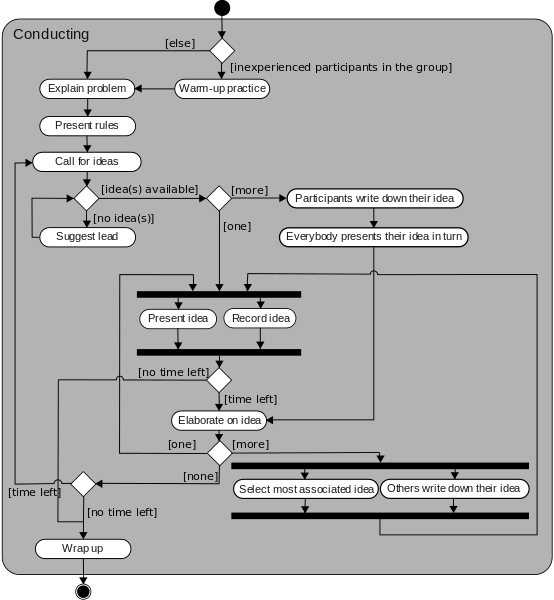Common Misconceptions about Model-Based Systems Engineering (MBSE)
Common Misconceptions about Model-Based Systems Engineering (MBSE)
There’s a lot of confusion and misunderstanding about Model-Based Systems Engineering (MBSE) – what it is and what it’s trying to accomplish. As with all exceptional tools, MBSE isn’t a one-size-fits-all solution or the end all be all of systems design. It is, however, an incredibly powerful tool that can probably help your organization more than you might think.
What is Model-Based Systems Engineering?
Essentially, Model-Based Systems Engineering provides a visual representation of everything involved in software development and systems development lifecycles. Or, to put it simply, MBSE is a way to represent systems graphically.
MBSE can condense hundreds of pages of documentation into a single graphical representation, covering everything from how a system operates, how multiple systems interface, their components and subcomponents… almost anything you can imagine, including the kitchen sink.
Models in MBSE are graphic representations of your entire system – whatever type of system that might be. Need to model a use case? It’ll work for that. Need to model a workflow? That, too. Need to model the ways in which requirements are (or aren’t) being met throughout your organization? Yep!
Creating a model for your system helps everyone to better understand the many different levels of that system. You can model the architecture, relationships, requirements, everything from a high level overview all the way down to specific protocol.
So why isn’t everyone using MBSE all day every day? For a lot of reasons, but mostly because of a few common misconceptions.
MBSE Isn’t “Just” a Single Drawing
One of the first big misconceptions about Model-Based Systems Engineering is that it’s “just” a drawing, or that it’s a giant blob that gets printed out and thrown up on a wall. Yes, MBSE represents things visually. But that doesn’t mean it’s “just” a drawing. It’s also not a single image.
A model in MBSE consists of a series of diagrams that each represent an aspect or element of your system. Which diagram you view will depend on your role in the project. A project manager can view the model through the lens of use case diagrams while a software developer might spend more time with the activity diagrams. Importantly, a model allows you to visually represent any and all aspects of your system in ways that make that information much easier to digest. Even for those who don’t consider themselves visual learners, a model can help people understand your system more quickly than they would reading a five hundred page document.

MBSE is a sophisticated representation of anything and everything that goes into building or analyzing systems, whether they are simple or extraordinarily complex. In other words, you could use MBSE to model selling Girl Scout Cookies to the neighbors. Or, you could also use it to model the interactions between the supply chain, manufacturing processes, distribution network and health code regulations that go into making the cookies in the first place.
MBSE Isn’t Actually New
Another big misconception about MBSE is that it’s something new. There’s often a fear of the unknown that comes with newer approaches to doing things. There’s concern it’ll just be a fad or will become quickly outdated (we’re looking at you, Google Glass). More importantly, there are very reasonable concerns that adapting an approach that has been in place for a long time will result in things slipping through the cracks or that a new approach can’t accomplish the same things. If it ain’t broke, don’t fix it, right? Not in the world of technology. And, most importantly, MBSE isn’t actually a new way of approaching systems engineering. It’s just the next evolution of Unified Modeling Language (UML), which has been a well-recognized standard for decades.
UML began as a way to visually represent how software applications are built. This sometimes took the form of data flow diagrams or class diagrams. Basically, UML offered a standardized way to visualize system design. UML then evolved into SysML – Systems Modeling Language. SysML brought with it a few additional standardized diagrams for modeling systems, and all of this was essentially a means to provide standardized approaches to system modeling. And MBSE draws on this long-standing framework to help you better understand and diagnose your systems, and then update them.
MBSE Models Aren’t Static
Too often, people think that models in MBSE are static, that you build a model once and that’s it. This couldn’t be further from the truth. Models are based on interpretations of what it is you want to achieve, and that will inevitably change over time. Your interfaces can change, or you’ll have a third party that wants to connect in some way.
There are many different tools available to help you implement MBSE. And while MBSE is very strong in its ability to show a snapshot of your system in time, these tools make your models perpetually adaptable. Consequently, you can model your system from the concept of design phase all the way through prototyping and implementation.
If you want to build an application that handles financial transactions online, you start by building a model of what you think the system should look like. Going into it, you’re going to have some known-unknowns and some unknown-unknowns, which means your model will definitely change over time. Thankfully, the tools you use to actually do your modeling can handle this type of iteration process.
MBSE Is Great for Documentation and Traceability
Using MBSE and updating your models over time also offers retrospective insights into how you got to where you are. Say you’ve been working on your application for five years and a new director steps in wanting to know how the system got here or why decisions were made. You can look back at previous models to explain the changes over time – often tracing those changes back to specific requirements.
Many of the available MBSE software tools have requirements settings already built into the platform. With these, you can directly map a requirement to where it’s being met in the model. This allows the user to map back to a formal statement of work or contract, ensuring all bases are covered and the product being delivered matches what was originally communicated to the client.
Another really powerful aspect of MBSE is the way that it can help to highlight where security vulnerabilities exist. By taking a five hundred page document and modeling it via MBSE, you will quickly be able to identify areas of your system that need attention. You can then more quickly and efficiently deploy mission critical systems where they need to be.
MBSE Works for Any System
While MBSE is particularly popular in the aerospace industry, it’s a valuable tool for basically anyone. MBSE can work for federal organizations, corporations, and pretty much any entity interested in building any kind of software or system. It can help model any kind of application – all the way from an airplane navigational system down to a mobile app to remind you to call your mom.
Beyond just software, MBSE will help you map out your system and show you areas where efficiency can be improved. This can come via activity diagrams, modeling the flow of events in a sequence and even modeling processes retrospectively to identify how things could have gone better.
Still curious about how MBSE might apply to your organization’s framework? We’d love to connect. We work with both government agencies and commercial enterprises to create and optimize systems that will stay in front of the pace of technology. Contact us today to learn more about how MBSE can work for you.

